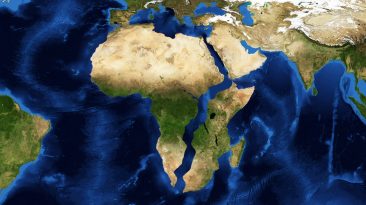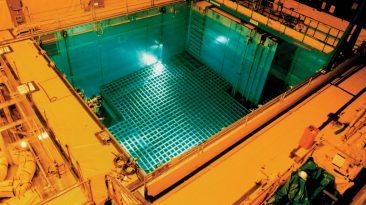If you could travel faster than the speed of light, where would you go? Mars?
The nearest star system Alpha Centauri? The distant stars in far galaxies? Does faster-than-light travel have its limits?
For all we know, nothing can travel faster than light. Lightspeed seems to be the universal speed limit for everything that’s moving in space.
Unless we build a spaceship capable of distorting space-time… A spaceship equipped with warp drive.
Our craft would be encased by a large ring made of some exotic material, that would compress space-time in front of the spaceship and expand it to the rear of it.
It wouldn’t be the spacecraft moving over the cosmic speed limit. It would be space-time itself moving around the spacecraft.
Once we figured out this method of propulsion, we could start our cosmic conquest. How far into the vastness of the Universe would we make it?
[dx_custom_adunit desktop_id=”RTK_CDE4″ mobile_id=”RTK_SUFd”]If the warp drive could accelerate our spacecraft to the speed of 10 times faster than the speed of light, it would only take us about 75 seconds to get to Mars. It would take even less time to get from the Earth to the Sun – some 50 seconds of space travel and there’s our star right in front of our eyes.
From there, we’d speed to the inner limits of the Oort Cloud – the beginning of the edge of our Solar System. At 10 times the speed of light, we’d get there in about 72 days.
After 83 more days in space, we’d arrive at Alpha Centauri – a star system that hosts the potentially habitable exoplanet — Proxima Centauri.
Our very first interstellar colony would settle on Proxima Centauri, but humanity wouldn’t stop exploring. Our next stop would be Gliese 667 Cc – the hotter and bigger version of Earth about 23.5 light-years away.
This exoplanet might not turn out to be too hospitable, but it could be worth sending a crew on the 4.5-year roundtrip to check it out. Other manned crafts would take on trips to Kepler-442b and Kepler-452b – the next exoplanets on our list of potentially habitable worlds.
Those spacecraft would have to speed up a little — unless they wanted to spend over 120 years in space covering a distance of over 1,200 light-years. At a speed of one thousand times faster than the speed of light, they’d only need about 437 days to reach those Kepler exoplanets.
Even when surpassing the lightspeed limit, we’d still have to spend years traveling across space; searching out other habitable worlds and their inhabitants, if there are any.
The Universe is big. Very big. And it keeps expanding. Maybe it never ends at all. We’d never be able to travel to the edge of it, even with working warp drive.
Our home galaxy, the Milky Way, is about 200,000 light-years across. Even if we could achieve the speed of one light-year per hour, it would take us 22 years to reach the outmost corner of our own galaxy.
Let’s come back down to Earth for a moment. The fastest space probe we’ve ever come up with is 90 million times slower than our hypothesized lightspeed spacecraft. We’ve got a long way to go to achieve a Star Trek level of interstellar travel.
And don’t forget that using warp drive technology would require an enormous amount of energy in the first place.
Maybe we should start investing our resources into building a Dyson sphere around the Sun to fill all our energy demands once and for all.
Subscribe to What-If on Youtube or follow the show on Facebook Watch.
Sources
- “Warp Drive May Be More Feasible Than Thought, Scientists Say”. Moskowitz, Clara. 2012. space.com. Accessed February 16 2019.
- “Warp Field Mechanics” 2019. ntrs.nasa.gov. Accessed February 16 2019.
- “How NASA might build its very first warp drive” Dvorsky, George, 2012. io9.gizmodo.com. Accessed February 16 2019.
- “What If We Had A Warp Drive?”. 2016. Piekniewski’s Blog. Accessed February 16 2019.
- “How Long Would It Take To Cross The Milky Way At Light Speed?”. Science, Live. 2018. Live Science. Accessed February 16 2019.
- “The warp drive: hyper-fast travel within general relativity” 2019. arxiv.org. Accessed February 16 2019.



























